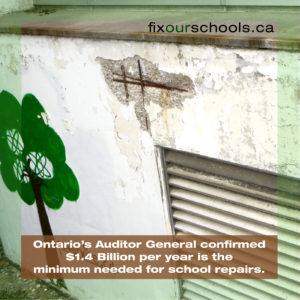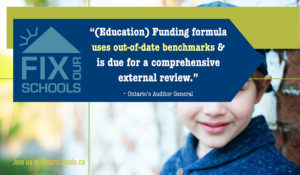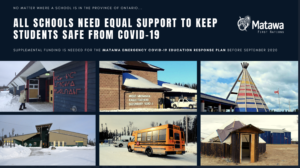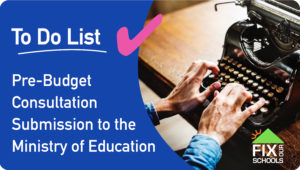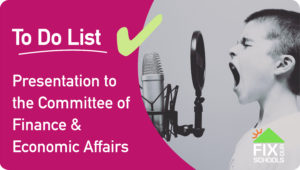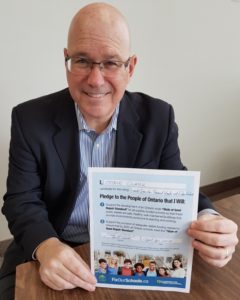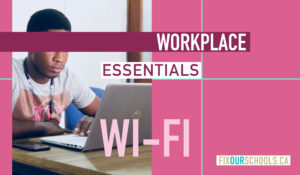Ontario’s Auditor-General Bonnie Lysyk and her office made the news this week after the release of a scathing report on our provincial government’s COVID-19 preparedness and management thus far.
So who is Ontario’s Auditor-General? What is the Auditor-General office’s purpose and role? Why is it that sometimes Premier Ford loves what the Auditor-General Office says and sometimes he does not? As per their website, the Office of the Auditor-General of Ontario:
- Is an independent, non-partisan Office of the Legislative Assembly that serves both Members of Provincial Parliament and the people of Ontario.
- Plays an important role in holding provincial public-sector and broader-public-sector organizations accountable for financial responsibility, well-managed programs, and transparency in public reporting.
- Audits Crown corporations and organizations in the broader public sector that receive provincial funding, such as hospitals and long-term-care homes, universities and colleges, and school boards.
Since our inception in 2014, the Fix Our Schools campaign has often cited Auditor-General reports that examined school infrastructure.
The Auditor-General’s December 2015 report was particularly informative to our campaign, as it clearly identified that:
- According to industry standards, $1.4-B/year is required by Ontario’s school boards for school repair and renewal simply to maintain schools in a state of good repair.
- Compared to the range of actual provincial funding of $150-M/year to $500-M/year for repairs and renewal over the previous five years, Ontario’s school boards had been grossly and chronically underfunded by the Province.
- 80% of Ontario’s publicly funded schools had been assessed by a third-party engineering firm that had already identified $14-B of disrepair, $1.7-B deemed critical and urgent (i.e., renewal work that should not be postponed due to risk of imminent failure).
- Over 100,000 Ontario students learn in portables, yet the conditions of these structures are not ever assessed.
- No provincial guidelines exist for the desired condition at which school buildings should be maintained. Shocking that there is no actual standard of good repair for Ontario’s schools, given the provincial government goes to the trouble and expense of paying an engineering firm to identify all the disrepair in schools.
Portables: Ontario schools’ dirty little secret.
Students in these “temporary” classrooms are invisible to Province:
-NOT counted in school repair data
-NOT counted as classrooms
Who is accountable for them being permanent? pic.twitter.com/oEqUfDHzOE— Fix Our Schools (@Fix_Our_Schools) September 30, 2019
Fix Our Schools was able to leverage this 2015 Auditor-General report to convince the provincial government to:
- Increase annual funding for school repair and renewal to the recommended $1.4-B/year, an amount that has since proven to be far too small to address the backlog in schools as we’ve seen the total repair backlog for Ontario’s schools increase to $15-B, and then to $15.9-B, and then to $16.3-B in November 2019, even as annual provincial funding remains at $1.4-B/year.
- Release school disrepair data transparently for all citizens to be able to assess the level of disrepair in their local schools. However, since Premier Ford took office in June 2018, the Ministry of Education has not updated and released school disrepair data and has consistently ignored calls for ongoing transparency into this critical information.
Since the 2015 Ontario Auditor-General’s report, the only other time that Ontario’s public school infrastructure has been considered was in 2018, when her office looked into Ministry of Education funding, in general. The 2018 report noted that when it comes to funding education in Ontario, the Ministry of Education “does not allocate funding based on actual needs”.
The Ontario’s Auditor-General report states that the Ministry of Education “does not allocate funding based on actual needs, and does not analyze whether additional funding provided for some students is actually achieving the intended results.” Huh? https://t.co/Ek9xthYTwq pic.twitter.com/pCckX5fenv
— Fix Our Schools (@Fix_Our_Schools) February 2, 2018
Here we are now in December 2020, five years from when the Ontario Auditor-General first delved into school infrastructure and identified many necessary steps to ensure that Ontario’s students attend schools that are safe, healthy, well-maintained buildings. What do we know today?
- Despite yearly provincial funding of $1.4-B/year for school repair and renewal, the overall repair backlog in Ontario’s schools has grown year over year since 2015, and is now at least $16.3-B.
- The $16.3-B of disrepair identified in Ontario’s school buildings does not include any disrepair in portables.
- The Ford government refuses to provide transparency into this disrepair because it has not yet updated and released school disrepair and FCI data since taking office in 2018.
- There is still no standard of good repair for Ontario’s schools so we don’t even know what “success” looks like for these critical buildings.
- The criticality of school buildings has become increasingly evident, as we have realized that we cannot chronically and grossly underfund infrastructure, and then realistically count on it to keep people safe in the midst of a global pandemic.
Fix Our Schools has no idea when the Ontario Auditor-General might delve into Ontario’s public school infrastructure again. However, we urge her office to do so very soon and to properly serve the people of Ontario – especially the 2-million children and thousands of educators and education workers who spend their days in school buildings – we urge her office to hold the provincial government to account for the ongoing failure to fix Ontario’s schools.

